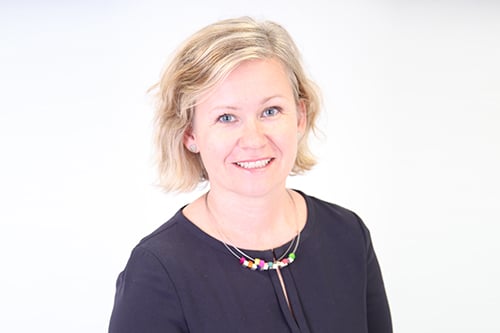

The insurance industry has made significant strides when it comes to gender diversity, with the most recent McKinsey report revealing that, when compared with other sectors, insurance fares better in terms of female representation in entry-level positions. However, the report also revealed that the industry trails behind others when it comes to representation at VP, and especially at SVP level. The chief operating officer at Munich Re Australia, Simone Dossetor (pictured),highlighted the need for role models in senior positions within an organisation, and of accessing the valuable feedback these provide.
“When I stop to reflect about some of the senior leaders [throughout my career], there haven’t been many women,” she said. “In fact, I’ve only had one female boss. Every woman who works and navigates family needs, brings a different perspective to leading and managing that [juggling act]. I was always very conscious when I had my children that I really wanted to have that balance and I would always try and bring that with me to work. I try to make sure the fact that I worked part-time for many years and that I work flexibly, is part of the whole picture rather than it being a real divide.”
Dossetor, who is part of the global advisory board of Insurance Business’s Women in Insurance Network,noted the need for women, in particular, to see both role models and pathways through the sector. There is a tendency for women to not to put their hand up and to underplay themselves, she said, and she believes they need to be very conscious of that, particularly in areas where they worry about meeting technical requirements. This is also true in interviews, where, in her experience, it is often men who provide a more optimistic view of themselves and what they can do.
“The other thing is applying a learning mindset,” she said. “We all need to embrace continual learning. It used to be great if you had one degree. Now the expectation is that you have three degrees. And you do have to keep building your skills and knowledge. In insurance, probably like most sectors, there’s always new things to learn - new regulation, new developments in technology. Being able to stay up to date and current is critical.”
Examining how the emphasis on talent acquisition has altered throughout her career, Dossetor noted that previously the focus was very much profession-based, from actuaries to lawyers to brokers, but now there is a much broader range of people coming into the industry, particularly around the areas of coding and data science.
“And, from a claims handling perspective, there’s more focus on healthcare and medical resources and skills,” she said. “So, I think there’s far greater diversity, raising the need for us to look at how to best manage and bring people together. There is probably a risk going forward of there being two categories - the people who are coding and developing the algorithms and then, as Jim Stanford from The Australian Institute recently described, the caring people who manage the interfaces. How we bridge those two skill sets is going to be the interesting challenge.”
Dossetor believes that to be successful in the insurance industry, you need to be something of an abstract thinker and to have a long-term vision in mind, as the sector does not deal with tangible products and, thus, you cannot know the results of your actions until years into the future. It’s all governed by rules and processes, she said, requiring constant navigation between the detail of the individual policy or the individual claim and what that entails at a strategic level.
“The other element is agility,” she said.“Insurance is a unique industry in that it can be impacted overnight by really large events, like the weather. And that’s part of day to day business. The COVID-19 pandemic is another example. So, you need to be able to have that long-term picture but also be able to effectively stop everything and adapt pricing models for new risks.
“The third thing is how you connect with people because, like in so many financial professional services, there’s a huge people element in motivating teams and engaging people to understand what they’re doing and bringing a purpose to it.”
People are the best part of working in the insurance industry, she said. From the very mathematical individuals who love solving data and coming up with new models and problems to those from legal backgrounds who work with words and focus on product disclosures, to the sales and marketing aspect of communicating product value to the end customer, the industry is built on a fascinating interplay of so many talented people, disciplines and collaborations.
Looking at her greatest achievements to date, Dossetor noted that these revolve around people and supporting their development as professionals and individuals while helping them navigate through any difficult circumstances. As the business changes and adapts, she said, the focus is really on developing people and seeing them grow into their careers through coaching and mentoring.
